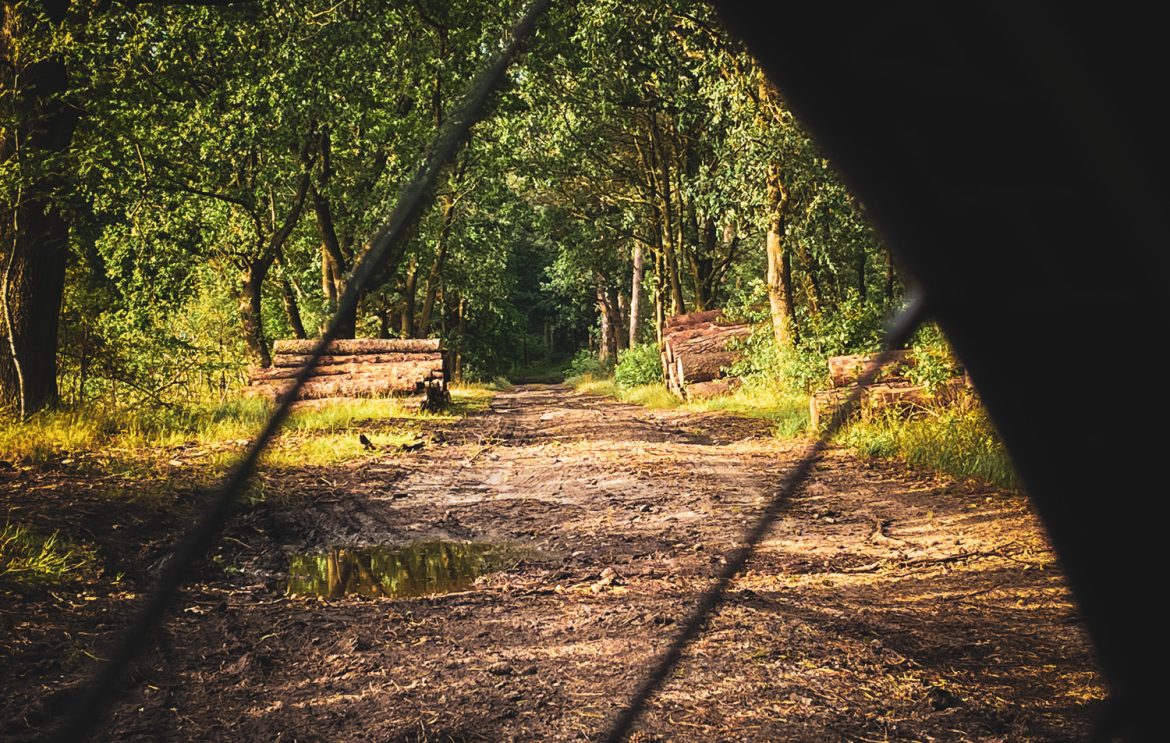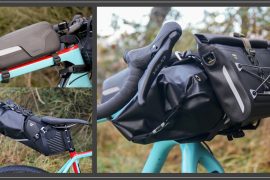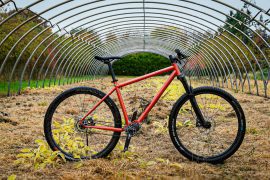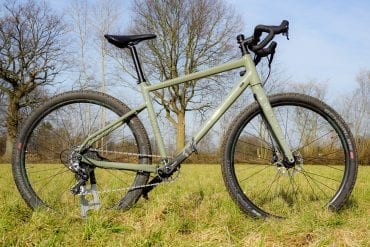I packed my bags again and went off on an impromptu overnighter last week. As is often the case, I stopped at one of the wonderful overnight campsites of “Wildes Schleswig-Holstein”. This time it was Aukrug again. It’s always a nice tour there, and the site is idyllically situated above a small river on the edge of a cornfield. It offers space for maybe 6-7 tents at the most and actually you always meet someone there. In winter rather less, but this time there were three other tents with cyclists.
And because you might still sit in front of the tent in the evening and chat a bit, I’m now catching up with you and have brought four topics to our “blog campfire”: nutrition and surprise, rims and disappointment, tyres and enthusiasm, navigation and expectation.
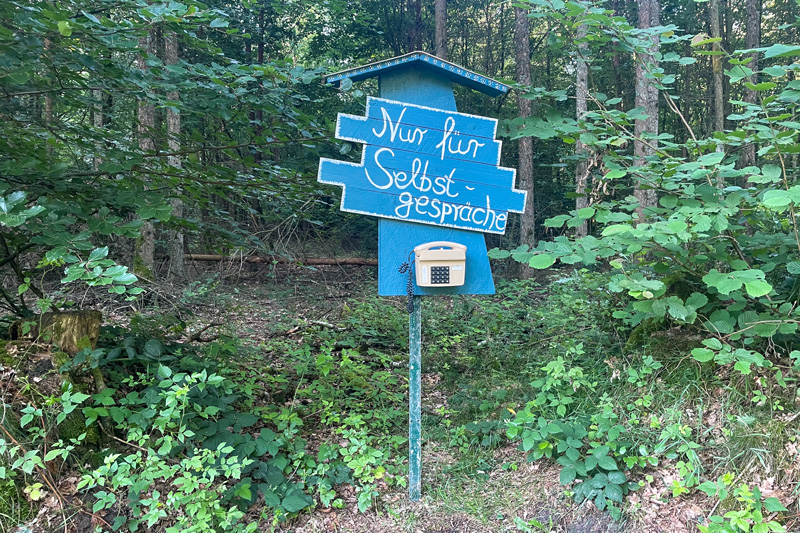
Nutrition and surprise
I stopped eating meat 9 months ago and have been a 98% vegetarian ever since. The 2% is when my kids don’t finish and I just don’t want to throw food away. I didn’t make a big decision to do that, I just stopped eating meat. Some time later I noticed that I had less strength when cycling, recovered worse and struggled with muscle pain and tiredness, as well as fatigue.
When I analysed this more closely a few weeks ago, I noticed the temporal connection between my giving up meat and the side effects that occurred during training. So what to do? A little research revealed that it definitely had something to do with the lack of meat. And I was naïve enough to have simply continued with my training workload without paying attention to nutrient substitutes. That took its toll.
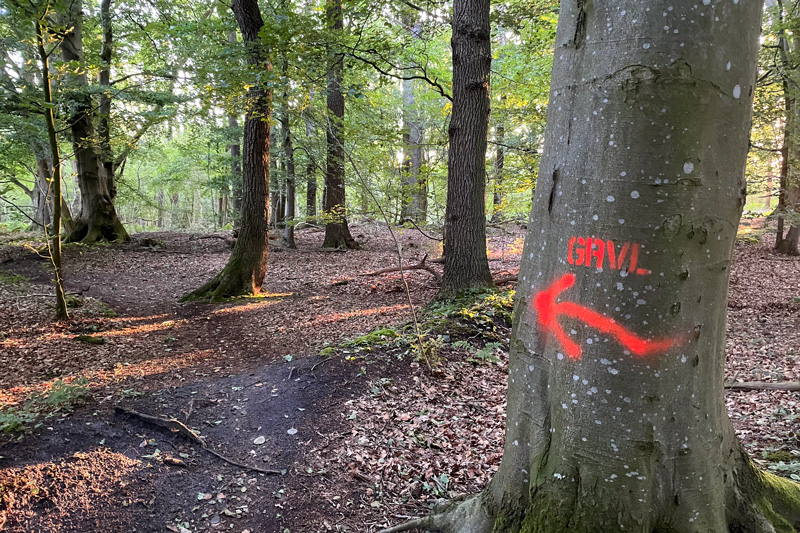
There were two solutions: Eat meat again or take so-called nutritional supplements.
I didn’t want to do the former, so I looked more into micronutrients and optimal supply. I also had experience with this: before the Silk Road Mountain Race, I took the green powder that is often advertised in podcasts for a year. At that time I was also eating meat. And as usual, once a year I have a medical performance diagnostic with a large blood count. That was wonderful then and there were no complaints about nutrient deficiencies or blood levels. And I felt fit and strong.
After the Silk Road I stopped the “daily routine”, also because it just costs quite a lot of money. I then prepared for the Bohemian Border Bash Race and kept my training load as high as it was. And after a year, the performance diagnostics and blood count again, which had even better results than with the green food supplement. And again, as a meat eater. So it was clear to me: I don’t need that kind of stuff. Just magnesium and some vitamins and good.
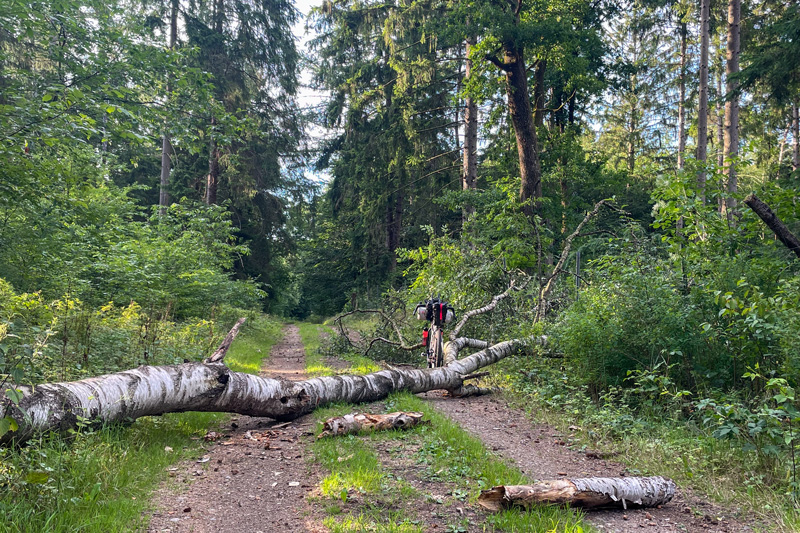
And this year, the same training workload and preparation for the next event in September. But no meat and the effects described above. In addition, I got sick remarkably often. I usually don’t get sick very often.
So I followed my doctor’s advice and the recommendation of my parents-in-law and got myself a new micronutrient concentrate, with which I am now doing a 75-day cure. And I am surprised: after one week my complaints were gone, and now, after three weeks, I feel strong and healthy and, above all, I don’t get sick and can perform on the bike again. Amazing, also because I am usually rather sceptical about this “mumbo jumbo”. But the meat has to be replaced and that seems to work better now.
Rims and disappointment
Let’s change the topic, because we need to talk about my rims. About a year ago I had a wheelset with carbon rims from Lilienthal built up. Specifically, with the Lilienthal XC rims. I had been toying with a carbon LR set for a long time, also because I was impressed by the riding characteristics and performance of the carbon rims on my test bikes.

The load capacity of the Lilienthal rims is given as 130kg, which is sufficient. And so LightWolf assembled a fine new set for me. And I was not disappointed with the riding feel and performance. A great propulsion and a driving stability that I love. On top of that, of course, there is the lower weight, but I didn’t attach much importance to that.
But then, after riding the Orbit with Stephan in the Weserbergland, I noticed cracks in the rim of the front and rear wheel after only 1,300km. Too bad. Since LightWolf’s service is excellent, the wheels went back. There must have been a manufacturing and material defect at Lilienthal and I got new XC rims replaced and fitted.
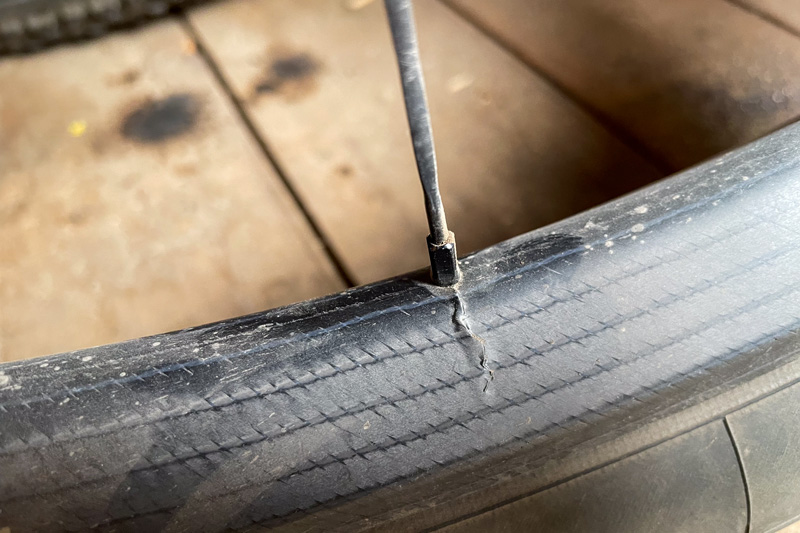
And everything went well after that, until yesterday, when after another 5,000km I found that cracks appeared again on the rear and front wheel. Very annoying, especially as I liked the Lilienthal very much and also the performance was right. But obviously they don’t stand up to the stresses.
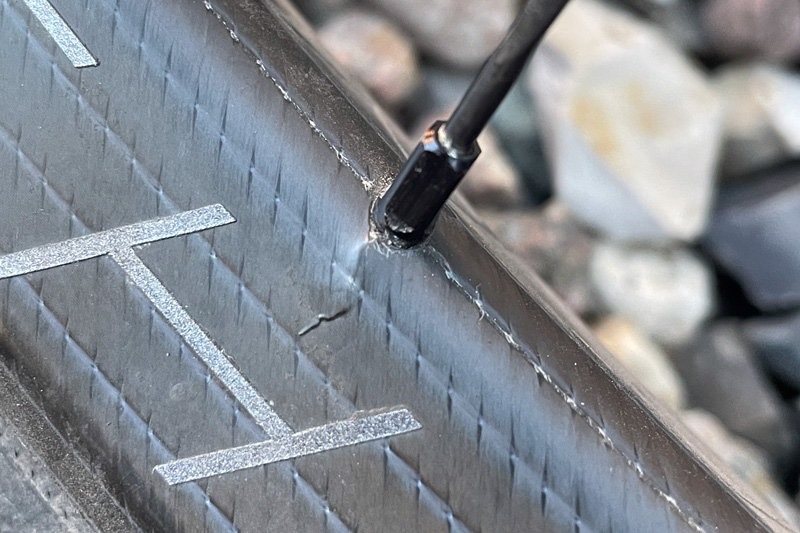
I have already contacted LightWolf, who are now looking for a solution. I have therefore reactivated my old wheelset, with which I will probably also compete in Bohemia in September.
And for those who want to start ranting about carbon and how it’s no wonder that they break: I’ve also completely shot up very solid aluminium rims from HUNT three times. And more noticeably than these cracks here.
Tyres and enthusiasm
However, my choice of tyres over the last few months has been and continues to be all the more pleasing. If you follow me on Instagram or Strava, you may remember the flat series I had last year. I tried a few tyres other than my Vittoria Mezcal and unfortunately didn’t have a good experience. I also wrote up my tyre experiences here at the time.
Then in December 2022 I decided to take a closer look at the Schwalbe G-One Overland. And I’m thrilled: they’ve done just under 1,500km, haven’t had any punctures and aren’t particularly worn.
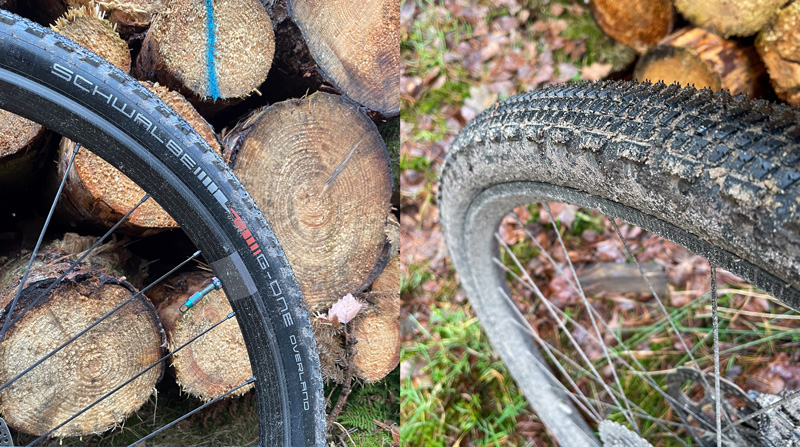
Off-road, of course, they reach their limits due to the tread, but on the road, on gravel and forest paths and when it’s not too muddy, they are really good. Honestly, I would even go so far as to say that the G-One Overland will replace the Mondial as tyres for the big trip.
I ran the tyres tubeless, in 50mm width on a 30mm rim.
For the Main Franken Graveller, however, I needed some tread, which is why I had the Schwalbe G-One Ultrabite sent to me. I had heard that they grip well off-road, but are a bit more sluggish on asphalt and have a high abrasion.
My impression: they don’t roll badly at all on asphalt, but as soon as they hit gravel, they are really agile and make a lot of power. However, when going downhill on dry gravel, I had the feeling that they no longer had the right grip or traction and I also had a slight spinning from time to time when going uphill. On forest tracks and when it is a bit wetter, they are really good and offer decent traction.
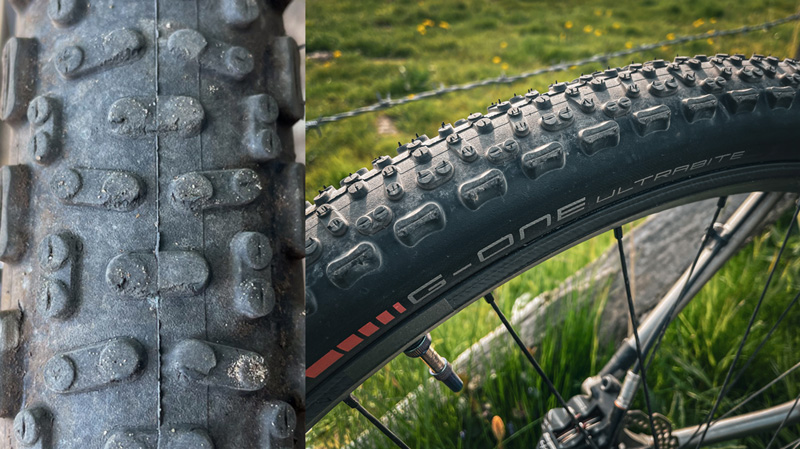
I have ridden them for almost 2,000km and have not had a flat. Again, tubeless, in 50mm width on a 30mm rim.
And as for wear, I’ve got that covered with data:
Tread depth new:
- F/B 2.5 to 2.7mm
After 500km Main Franken Graveller (80% gravel, 20% road):
- F 2mm, B 1.5mm
After 2,000km (50% gravel, 50% road):
- F 1.5 to 1.8mm, B 1mm.
Despite the wear, the tyres still move well and safely and offer traction. Otherwise I would change them, i.e. front to rear and vice versa. I believe that another 2,000 km are certainly possible. But unfortunately the rims on which the tyres run are broken…
Navigation and expectation
I have been navigating with a Wahoo Roam for many years and am actually quite satisfied with it. It is already the second model, as the battery of the first one gave up at some point. But Wahoo has a very good customer service and I got a new device immediately and without complications. And somehow I got used to Wahoo: the operation via the app, the intuitive menu navigation and control via the buttons while riding. The disadvantages: very little memory and an insufficient GPS signal from time to time.
But this has been solved with the new Roam V2 and I actually wanted to buy it. A year ago I bought the Garmin 530 as a replacement navigation device, but I didn’t get on with the usability and the UX. So I sold it again.
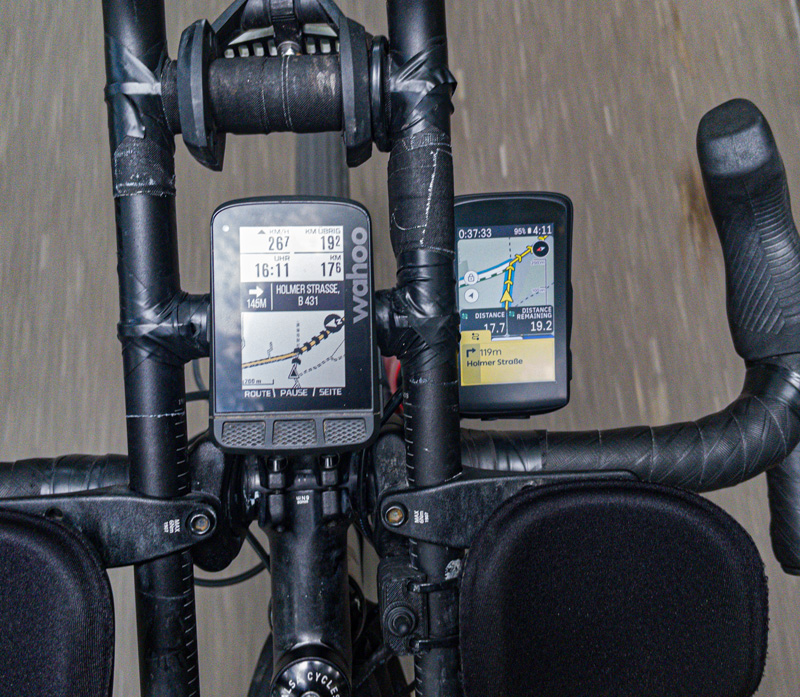
The next thing I looked at was the Hammerhead Karoo 2, which is praised as “the best GPS I’ve ever had”. And when there was a summer discount promotion, I bought it.
The Karoo 2 differs from the Wahoo Roam as follows:
– It is bigger
– It is a little heavier
– It is not controlled via an app, but via the device itself and the Hammerhead website.
– Has Android-based software and menu navigation
– The standard mounting is different
– It has more memory (32GB)
– It has “more GPS” with GPS, GLONASS, Beidou and QZSS
– It is operated via touch and, if required, via buttons
– The map and navigation display is different and more colourful
– The re-routing works a bit better in my opinion
– It has a USB-C port
– It only supports English and Spanish
The Karoo 2 is a really good and very high-quality navigation device with good menu navigation and usability. The first device unfortunately had a software bug that caused the menu to take on a life of its own during operation and switch back and forth. But it was replaced without any problems.
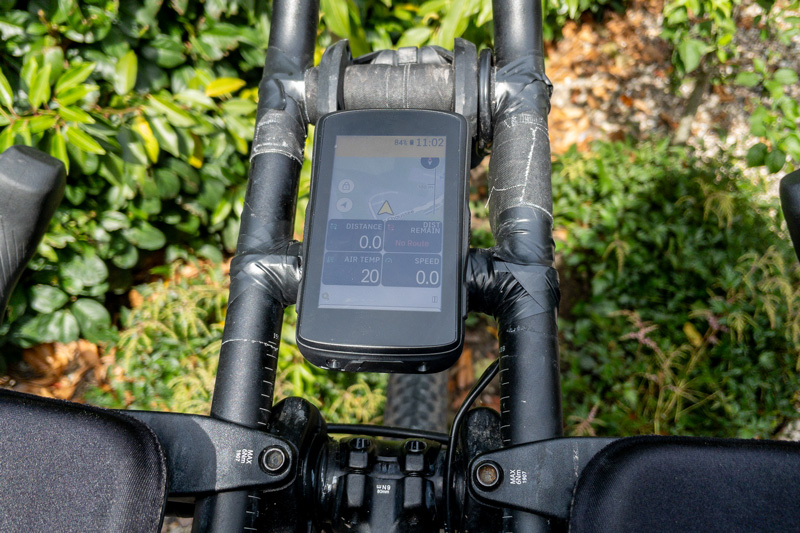
But the Karoo 2 didn’t quite convince me, or to put it another way: it doesn’t really suit me.
Five reasons for this:
- It can only be charged via battery on the road. I can charge my Roam directly from the hub dynamo without a buffer battery.
- The battery life is given as 8-10 hours in practice. I had the screen brightness set to 30-40% and the battery drained quite quickly. The Roam lasts longer.
- The Karoo 2 takes planned routes from the Hammerhead website. I have set up a profile there and connected to Komoot. My planned routes are taken from there. I have to manually synchronise new routes there before they appear on the device – assuming an internet connection. With Wahoo, this is done via the app on the smartphone and is simply better in practice. I can simply reschedule spontaneously or synchronise new routes.
- The touch menu is just not my thing, but I don’t blame the Karoo for that. It’s pretty easy to use, sometimes a bit fiddly, but it works. I just like to use the keys, because they are easier to use while I’m riding. With the Karoo 2, you sometimes mistype when it jerks.
- Altitude accuracy: to be honest, this is not a pro or con point, but an observation that I have also made with the Garmin. For the same route and the same ride data, the Karoo 2 gives me more altitude metres than the Wahoo. In fact, a lot more. Where the Wahoo only measures 429 metres, the Karoo gives me 481 metres. Or: Wahoo says 263HM, Karoo says 336HM. I find these differences quite clear. Anyone who can give a well-founded reason for this, please let me know or post it in the comments.
For those who are more interested in the Karoo 2 and need expert opinions, I recommend the test report by Matthias aka GPS Radler.
I will now take the Karoo 2 with me to Bohemia as a replacement navigation device and then sell it. And when my current Roam is done, I’ll switch to the Roam 2.
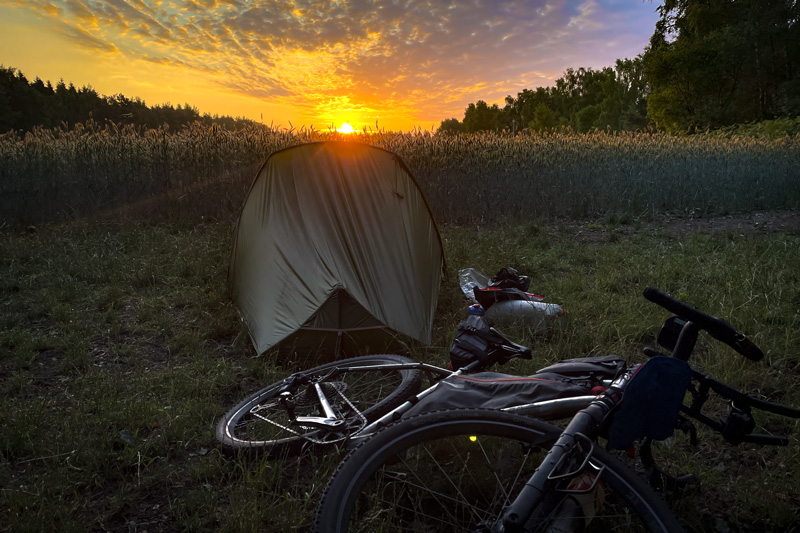
So, the campfire has burnt down and I’m going into the tent now.
Thanks for the talk! See you next time.

